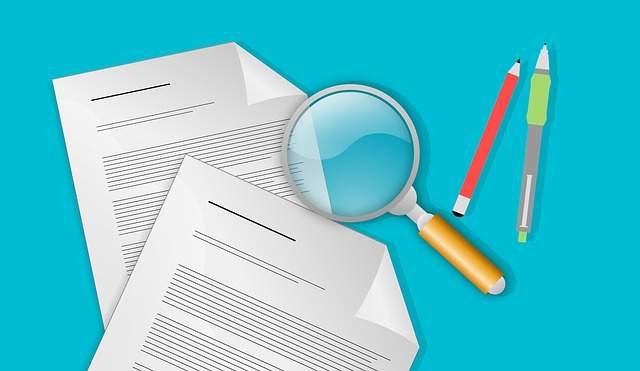Valuation of Goodwill: What is Goodwill? Meaning of Goodwill; Goodwill is the value of the reputation of a firm built over time concerning the expected future profits over and above the normal profits. So, what is the topic we are going to study; Valuation of Goodwill – Meaning, Need, Factors, and Methods (In Hindi). A well-established firm earns a good name in the market, builds trust with the customers, and also has more business connections as compared to a newly set up business. Goodwill in accounting is an intangible asset that arises when a buyer acquires an existing business.
Here are explained how to Valuation of Goodwill? Meaning, Need, Factors, and Methods.
Goodwill represents assets that are not separately identifiable. Goodwill does not include identifiable assets that are capable of being separated or divided from the entity and sold, transferred, licensed, rented, or exchanged, either individually or together with a related contract, identifiable asset, or liability regardless of whether the entity intends to do so.
Valuation of Goodwill Meaning:
There are various circumstances when it may be necessary to value goodwill. Some of the circumstances are;
First, In the case of a partnership, when there is an admission, retirement, death or amalgamation, or a change in the profit-sharing ratio take place, the valuation of goodwill becomes necessary.
Secondly, In the case of a company, when two or more companies amalgamate, or one company absorbs another company, or one company wants to acquire controlling interest in another company or when the Government takes over the business, valuation of goodwill becomes necessary.
Third, In the case of a sole trader concern, goodwill is valued at the time of selling die business, to decide the purchase consideration.
Finally, In the case of individuals, goodwill is valued for Estate Duty, Death Duty, etc. On the death of a person.
Need for Valuation of Goodwill:
Valuation of goodwill may make due to any one of the following reasons:
A Sole-Proprietorship Firm:
- If the firm sells to another person.
- It takes any person as a partner, and.
- It converts into a company.
A Partnership Firm:
- If any new partner takes.
- Any old partner retires from the firm.
- There is any change in the profit-sharing ratio among the partners.
- Any partner dies.
- Different partnership firms amalgamate.
- Any firm sale, and.
- Any firm converts into a company.
A Company or Firm:
- If the goodwill has already been written-off in the past but the value of the same is to records further in the books of accounts.
- An existing company taking with or amalgamated with another existing company.
- The Stock Exchange Quotation of the value of shares of the company is not available to compute gift tax, wealth tax, etc., and.
- The shares are valued based on intrinsic values, market value, or fair value methods.
Factors Affecting the Value of Goodwill:
The following factors affect the value of goodwill:
Location:
A business which locates in the main market or at a place where there is more customer traffic tends to earn more profit and also more goodwill. If the firm centrally locates or locate in a very prominent place, it can attract more customers, increasing turnover. Therefore, the locational factor should always consider while ascertaining the value of goodwill.
Time:
The time dimension is another factor that influences the value of goodwill. The comparatively old firm will enjoy a more commercial reputation than the other one since the old one is better known to its customers, although both of them may have the same locational advantages.
Nature of Business:
A firm that deals with good quality products or has stable demand for its product can earn more profits and therefore has more value. This is another factor which also influences the value of goodwill which includes:
- The nature of goods.
- Risk involved.
- Monopolistic nature of the business.
- Benefits of Patents and Trade-marks, and.
- Easy access to raw materials, etc.
Capital Required:
More buyers may interest to purchase a business that requires a comparatively small amount of capital but the rate of earning a profit is high and, consequently, raise the value of goodwill. On the contrary, for a business that required a large amount of capital but the rate of earning a profit is comparatively less, no buyer will interest to have the business and, hence, the goodwill of the said firm pull down.
Owner’s Reputation:
An owner, who has a good personal reputation in the market, is honest and trustworthy attracts more customers to the business, and makes more profits and also goodwill.
Market Situation:
The organization has a monopoly right or condition in the market or having limited competition, enables it to earn high profits which in turn leads to a higher value of goodwill.
The trend of Profit:
The value of goodwill may also be affected due to the fluctuation in the amount of profit (i.e., based on the rate of return). If the trend of profit is always rising, no doubt the value of goodwill will be high, and vice versa.
The efficiency of Management:
Efficient management may also help to increase the value of goodwill by increasing profits through properly planned production, distribution, and services. An organization with efficient management has high productivity and cost-efficiency. This gives it increased profits and also high goodwill. Therefore, to ascertain the value of goodwill, it must note that such efficiency in management must not be curtailed.
Special Advantages:
A firm that has special advantages like import licenses, patents, trademarks, copyrights, assured supply of electricity at low rates, subsidies for being situated in a special economic zone’s (SEZs), etc. possess a higher value of goodwill.
Other Factors:
- The condition of the money market.
- The possibility of competition.
- Government policy, and.
- Peace and security in the country.
Precaution to Take in Valuing Goodwill: We know that the amount of goodwill always pays for in the future. The buyer will pay a little more than the intrinsic value of assets only when he expects that he will enjoy some extra benefits from such goodwill shortly. On the other hand, if the buyer thinks that there is no possibility of having such advantages in the future, he will not be ready to pay anything for goodwill—even if the value of goodwill is very high.
Methods of Valuing Goodwill:
There are two methods of valuing goodwill:
- Simple profit method, and.
- Super-profit method.
Simple Profit Method:
There are two methods based on simple profit:
- Purchase of Past Profit Method, and.
- The capitalization of the Average Profit Method.
A. Purchase of Past Profit Method:
Under this method, goodwill is expressed as a purchase of a certain number of years’ profit based on the adjusted average profit of a given number of years.
This method involves two steps:
- The profits for an agreed number of years preceding the valuation average to arrive at the average annual profit earned during that period. This will have to adjust in the light of future possibilities and the average future maintainable profit determined. If the profits have been fluctuating, a simple average use. If profits show a steadily increasing or decreasing trend, appropriate weights are used giving greater weightage for profits of the later year.
- The average future maintainable profit is multiplied by a certain number of years to find out the value of goodwill. The number of years selected for this purpose base on the expectation of the number of years’ benefit to derive in the future from the past association.
For example, if the average future maintainable profit is Rs.25, 000 and it expects that this profit would earn for at least another 3 years, then the goodwill will be:
Goodwill,
= Rs. 75,000 (25,000 x 3).
= Average of profit x number of years.
The number of years over which the profits are averaged and the number of years’ purchase applied may vary considerably in practice but generally falls between one and five years. Estimating future profit beyond a period of say, 5 years would be quite difficult and unrealistic.
The method suffers from two defects:
- The difficulty of finding out the right number of years’ purchase of profits as it depends on so many factors and
- Ignoring capital to employ in the business.
B. The capitalization of the Average Profit Method:
The following steps are to take in ascertaining the value of goodwill under this method:
- Ascertain the average future maintainable profit, as explained already.
- Capitalize this average profit at the normal rate of return on investment on the type
Of business under consideration:
This will give the net worth of the business.
- Find out the value of net tangible assets (i.e., net assets other than goodwill) of the business.
- Deduct the net tangible assets from the capitalized net worth of the business and the difference is goodwill.
Super-Profit Method:
Strictly speaking, goodwill can attach only to a business that is earning above-normal profits of super-profits. If there is no anticipated excess earning over normal earnings, there can be no goodwill.
Such excess profits know as super-profits and it is the difference between the average profit earned by the business and the normal profit based on the normal rate of return.
Hence for finding to the super-profits, the following information will require:
- The estimated average future profits of the firm (ascertained as already explained),
- The normal rate of return on investment and
- The fair value of the average capital employed in the business.
The normal rate of return:
The normal rate of return refers to the rate of earnings that investor, in general, expect on their investments in a particular type of industry. It varies depending upon general factors like the bank rate, general economic conditions, political stability, etc., and specific factors like period of investment, risk attached to the investment, etc.
Normal profit and Super-profit:
If the average capital employed and the normal rates of return know, the normal profit can ascertain. For example, if the average capital employed is Rs. 1, 00,000 and the normal rate of return is 10%, the normal profit is 1, 00, 000 x 10/100 = 10, 000.
Super-profit is the simple difference between the actual average profit earned and the normal profit. If in the above example, the average profit is Rs. 25,000, then the super-profits will be Rs. 25,000 – Rs. 10,000 = Rs. 15,000
Goodwill based on Super-Profit:
There are four methods of calculating goodwill based on the super-profit.
They are:
- Purchase of super-profits Method,
- Sliding-scale Valuation of Super-profit Method,
- Annuity of Super-Profit Method and
- The Capitalization of Super-Profit Method.
1. Purchase of Super-profit Method:
Goodwill as per this method = Super profit * Number of years. If, for example, the super-profit is Rs. 15,000 and goodwill agree to be 3 years’ purchase of super-profits, then the goodwill will be s.45,000 (15,000 * 3)
2. Sliding-scale Valuation of super-profits Method:
This is the only variation of the first method. It is based on the logic that the greater the number of super-profits, the more difficult it would be to maintain. Higher profit will naturally attract competition and soon the firm’s ability to make super-profits is curtailed.
3. Annuity super-profit Method:
Under this method, goodwill calculates by finding the present worth of an annuity paying the super profit per year, over the estimated period discounted at the given rate of interest. Usually, the reference to the Annuity Table will give the present value of an annuity for the given number of years and at the given rate of interest.
Goodwill = super-profit * annuity.
For example, if the super-profits are Ts. 15,000 and the annuity of re. 1 at 10% for 3 years is 2.48,685, then the goodwill is = Rs. 15,000 * 2.48,685 = Rs. 37,302.75. This method takes into consideration the interest loss involved in paying a lump sum as goodwill in anticipation of the future of profit.
4. The Capitalization of Super-Profit Method:
This is similar to the capitalization of the average profit method as already explained. Under this method, the super-profits when capitalized at the normal rate of return will give the value of goodwill.
Goodwill,
= Rs. 1, 50, 000 (Rs. 15, 000/10 x 100).
= Super Profit/Normal rate of return x 100.
This method gives the maximum value for goodwill. Since the contention that super-profits will continue for long is unreasonable, this method is not safe for one to follow.
















